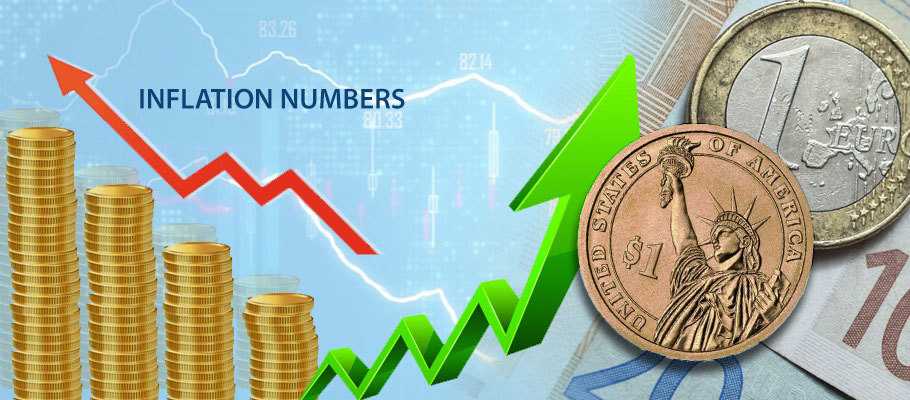
Published: September 17th, 2021
EUR/USD was buoyant this week following the publication of American inflation data. The numbers were less than investors had expected, indicating a spike in new COVID-19 cases was hitting US economic growth.
August CPI inflation was up 0.3 per cent month-on-month, undercutting the consensus expectation of 0.4 per cent and July’s actual of 0.5 per cent.
From a markets perspective, however, the more significant number was core CPI inflation, which only went up by 0.1 per cent from July to August, missing expectations for 0.3 per cent.
July's core inflation metric had already reached 0.3 per cent, signalling that peak inflation for the period may have already passed by.
The data will stoke worries that the Federal Reserve's first interest rate hike will now be kicked further down the road, a monetary policy dynamic that tends to soften demand for dollars.
USD dropped in the data’s wake, pushing the euro-to-dollar (EUR/USD) rate to a high of 1.1841 in the hours immediately following publication. The pound-dollar rate rose by a full third of a per cent to reach 1.3884.
While markets react coolly to the data, analysts believe the chilling sentiment around USD will soon pass.
A senior economist at CIBC Capital Markets Global Economics unit told Bloomberg that ‘for now, the annual rate of inflation is still red hot’.
Annual CPI came in at 5.2 per cent in August, in line with investor expectations (though slightly below July's reading of 5.3 per cent).
Annual Core CPI for August came in at a solid 4 per cent, under the consensus of 4.2 per cent and below the previous month's 4.2 per cent.
CIBC also said that rising Covid-19 numbers in America may have played a role in softening the numbers, with a particularly negative downturn in demand for some service sectors.
Airline ticket and hotel room rates both declined in August, with airfares falling by almost 10 per cent.
‘We’re expecting a brief lull in inflation over Autumn and Winter before an uptick in demand takes hold,’ added CIBC. ‘There may also be some continuing supply issues which will cause monthly price increases to speed up again in early- to mid-2022.’
In a market analysis published Wednesday, London-based Patheon Economics said that the economic consensus ‘always looked a bit high, but the big surprise for us has been the plunge airfares and drop in passenger numbers. We expected the decline would be smaller.’
Another primary driver of inflation this year has been US used car prices. They fell by 1.5 per cent, the first decline since March. Pantheon’s economists believe that pattern will continue. The big story for the next 12 months will be the extent to which more robust productivity offsets rising wage growth, they say, thereby ‘stopping any CPI spike due to easing lockdowns from turning into sustained inflation’.
In the UK, The Office of National Statistics (ONS) said this week that the rise in British CPI inflation in the year prior to August 20 is the ‘largest inflation increase ever recorded’ since the current survey series started in 1995. Economists are warning that even bigger British inflation surprises are in the offing.
CPI rose 3.1 per cent in the year to August, up from 2.0 per cent in the 12 months leading up to July. That puts it well above market expectations, which anticipated a rise of 2.7 per cent.
CPI grew 0.6 per cent from July to August, which beats the previous month's growth of 0.5 per cent and above the consensus expectation of 0.48 per cent.
There was a rise of 3.1 per cent for year-on-year core CPI, upon the 1.8 per cent reading taken in July and higher than the 2.7 per cent foreseen by the market.
Month-to-month core CPI rose 0.6 per cent in the month to August, ahead of the 0.3 per cent anticipated and the 0.4 per cent captured in the previous month.
The language in the ONS release seemed to stress the impact of lockdowns during 2020 on the scale of some rice hikes. Restaurants and cafes, in particular, were heavily discounted in 2020 under Westminster’s ‘Eat Out to Help Out’ subsidy scheme.
As a result of the campaign's effect, ‘the shift up in August’s 12-month inflation measure is probably a blip.’
The impact of state support and economic stimulus aren’t the only factors affecting inflation, however. Rising prices in food, beverage, hotels, transport, recreation, and culture contributed to the August uptick.
The ONS noted in its release that even if ‘Eat Out to Help Out’ is removed, August’s overall year-on-year inflation figure would be notably higher.
Transport costs were pushed upward by driver shortages and capacity issues in logistics and warehousing, the largest single price hike from any sector and the most significant spike in transport prices since October 2012.
Ful is another factor in the increased cost of transportation. In August, UK petrol prices averaged 134.4 pence per litre, versus 112.8 pence per litre the year prior. That makes August’s fuel price hike is the biggest recorded since November 2013.
Demand for used cars is also pressuring UK transport prices, mirroring a similar market dynamic in America.
A global shortage in automotive computer chips has also slowed new car production and kept car prices buoyant. Loss of confidence in public transport and increasing demand for cars driven by the COVID-19 pandemic keeps car prices aloft.
Pantheon Macroeconomics believes second-hand car prices are largely to blame for the upside surprise in inflation. The return of European air travel in the summer is also beginning to turn up in price dynamics.